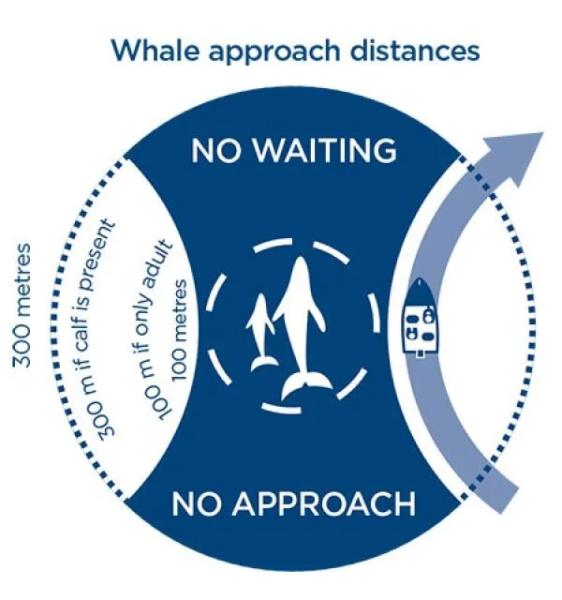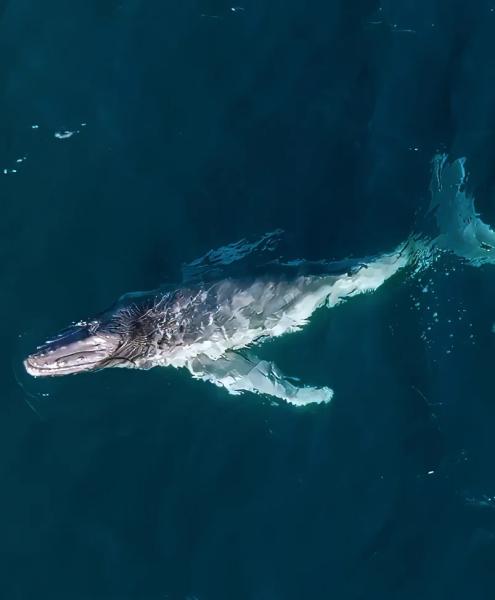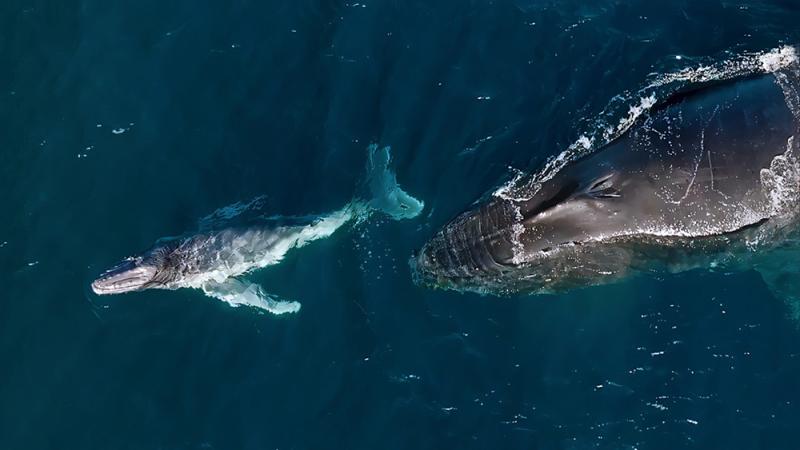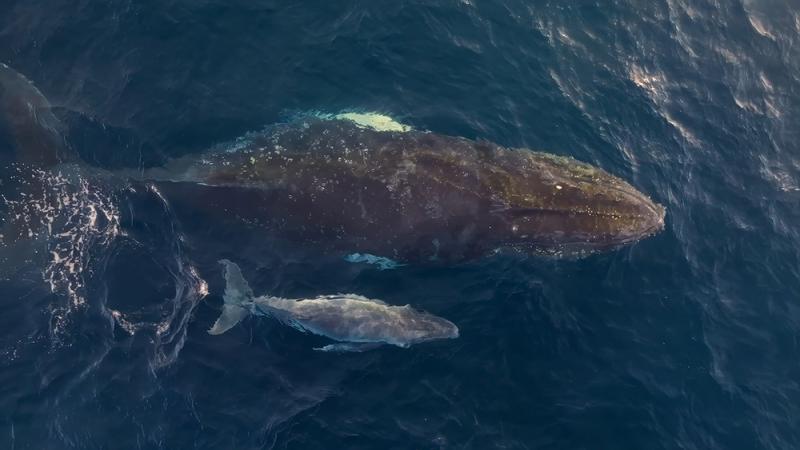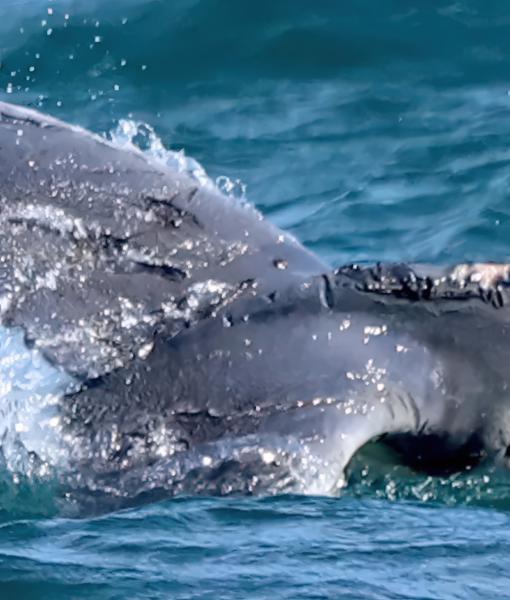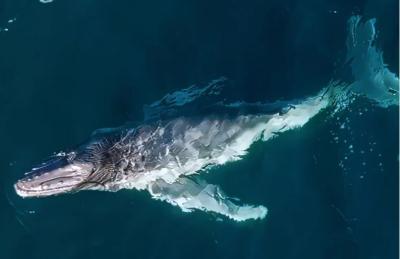
Surprise baby whale sightings increase the mystery of humpbacks - Wildlife Australia Guide
Gallery
URPoint Details
Surprise baby whale sightings increase the mystery of humpbacks
A UNIVERSITY of New South Wales (UNSW)-led study published on May 20, 2025 reveals humpback whales are being born much further south than previously thought, with sightings extending as far as Tasmania – more than 1500km ahead of the assumed calving zone.
“Historically, we believed that humpback whales (Megaptera novaeangliae) migrating north from the nutrient-rich Southern Ocean were travelling to warmer, tropical waters such as the Great Barrier Reef to calve,” UNSW Sydney PhD candidate and whale watching skipper Jane McPhee-Frew said.
She is the lead author on the research, with co-authors Holly Raudino and Kelly Waples from the Western Australia Department of Biodiversity Conservation and Attractions, and Dr Vanessa Pirotta from Macquarie University.
The study includes more than 200 sightings of humpback calves from whale watching operators, citizen scientists and government wildlife agencies – across an area extending from Queensland down to Tasmania and across to New Zealand’s South Island. The findings challenge current beliefs of where humpback whales give birth.
“I was working part-time as a skipper on a whale-watching boat in Newcastle when I first spotted a calf in the area,” Ms McPhee-Frew said.
“It seemed out of place. The calf was tiny, obviously brand new. What were they doing here? But none of my tourism colleagues seemed surprised.
“This sparked a conversation with my research colleagues, and we realised there was a gap between the scientific literature and the sightings.”
Surprise calf sightings in ‘risky’ waters
Ms McPhee-Frew said once they started investigating, reported sightings came in from further and further south.
“Eventually, we just ran out of land to see them from,” she said. “So we don’t actually know where the limit is. But we had reports right to the bottom of Tassie, the southernmost points of Western Australia and to the South Island of New Zealand.”
This emerging pattern suggested humpbacks may have more complex migration and breeding behaviours than previously thought – which comes with a new set of issues.
Ms McPhee-Frew’s first calf sighting in Newcastle in 2023 was from within a busy shipping lane – the city is home to the largest coal trading port in the world.
Most observations of live calves in the study were from 2016 onwards, with two-thirds of the observations made in 2023 or 2024.
“It’s not just the sightings themselves that are important,” Ms McPhee-Frew said.
“The pattern we’re seeing is mother whales with calves travelling through some of the busiest shipping lanes and urbanised regions.
“This means these vulnerable animals are exposed to risks like boat strikes, entanglements, pollution – and just general public unawareness.”
The study is an example of how industry, research institutions, government agencies and the wider public work together to improve the understanding and protection of marine life.
How humpbacks came back from the brink
Humpback whales were once close to extinction, with populations in the 1960s plummeting into the low hundreds. On the back of increased protection and conservation efforts, their numbers have risen to around 50,000 today.
Ms McPhee-Frew said while the discovery of baby humpbacks being born so far south of the tropics might seem new, the behaviour itself might not be. It’s probably just newly visible.
She scoured historical records, including 19th-century whaling logbooks and accounts from expeditions such as Captain Scott’s Terra Nova. Within these texts were sightings of mothers with calves at similar latitudes to those now being reported.
She said this information on breeding patterns was likely not seen for decades as humpback populations were so low following industrial whaling. The behaviours may also only just be coming into view “with more eyes than ever before looking at the water with technology like drones and with activities like whale watching”.
Ms McPhee-Frew said what this study highlighted was the critical need for increased awareness to protect the newborn whales throughout their winter journey north – which, in some cases, could span more than 2300km.
“Regardless of the health of population now, we can’t be in a situation where we’re putting any age of whales – especially baby whales – in a situation where they’re getting caught in nets, being exposed to chemicals, being hit by boats and being harassed.”
Co-author Professor Tracey Rogers, also from UNSW, said newborn humpbacks were not as strong as adult whales.
“Mums with newborns swim much more slowly,” Prof. Rogers said.
“Newborns are like Great Dane puppies. They have those long, enormous fins that they need to grow into, and they’re not very strong swimmers. So they rest a lot of the time on their mum’s back,” she said.
“Imagine giving birth off Hobart and then swimming up the coast.
“It’s heartbreaking to think of these young whales travelling through busy ports and dangerous shipping lanes with those long, clumsy fins.
“And it’s not just happening here in NSW – this is off WA, Victoria, Tasmania, New Zealand – it’s something we just didn’t know before.”
People have to keep their distance
“The legislation to protect humpback whales, including mothers and calves, is already in place across all states,” said Dr Adelaide Dedden from the NSW National Parks and Wildlife Service – which collaborated with the UNSW scientists for this study.
“But we do have a gap in public awareness, particularly among recreational water users,” Dr Dedden said.
“People need to be aware that calves are being seen not just on the southern migration but also on the northern one.”
While close-up images of baby humpbacks may give the impression that encounters are guaranteed, these moments are rare and rely on the whales approaching out of curiosity – not pursuit by vessels.
“Humpbacks are charismatic and curious,” Dr Dedden said. “They're going to want to come and check out the boat.”
She said NSW waters have numerous whale watch operators. The guidelines are to maintain a 100m distance from adult whales and 300m from mother-calf pairs.
“We’ve been working hard to get this message out to the public and encourage boaters, surfers, kayakers and jet-ski operators to be aware of these guidelines,” Dr Dedden said.
Collaborative approach is the key
Ms McPhee-Frew said partnering with government agencies and sharing information ultimately supported better policies to protect the whales.
She also said whale watching operators, who are regularly out on the water, are critical for providing sightings data as well as educating the public about safe approaches.
In addition, social media platforms like Instagram and Facebook are invaluable tools for citizen science, for sharing images and information about whale sightings.
“The excitement and curiosity around whales are contagious,” Ms McPhee-Frew said.
“We’ve built a huge repository of data just by encouraging the public to share observations.”
Why travel the ‘humpback highway’ north?
Ms McPhee-Frew said the question remained of why humpback mothers continue to use the ‘humpback highway’ to travel north after giving birth because, “in the tropics, there’s really no food for them”.
She said rather than holding a strict view of migratory patterns with fixed endpoints, the focus is shifting to how humpbacks use different marine environments on their journey.
“We still have a lot to learn,” Ms McPhee-Frew said.
“But, you know what? It’s such a privilege to see whales. It is such a fantastic aspect of living in Australia.
“We just need to follow the rules so everyone can enjoy.”
Fast Facts
Humpback whales are not always born in tropical waters, new research has shown.
This challenges long-held assumptions about their breeding and migration behaviours.
It also raises new questions for marine conservation.
Link to the online story and video: https://news.unsw.edu.au/en/surprise-baby-whale-sightings-reveal-theres-still-much-to-learn-about-humpbacks
ends
- Type:
- Wildlife
















